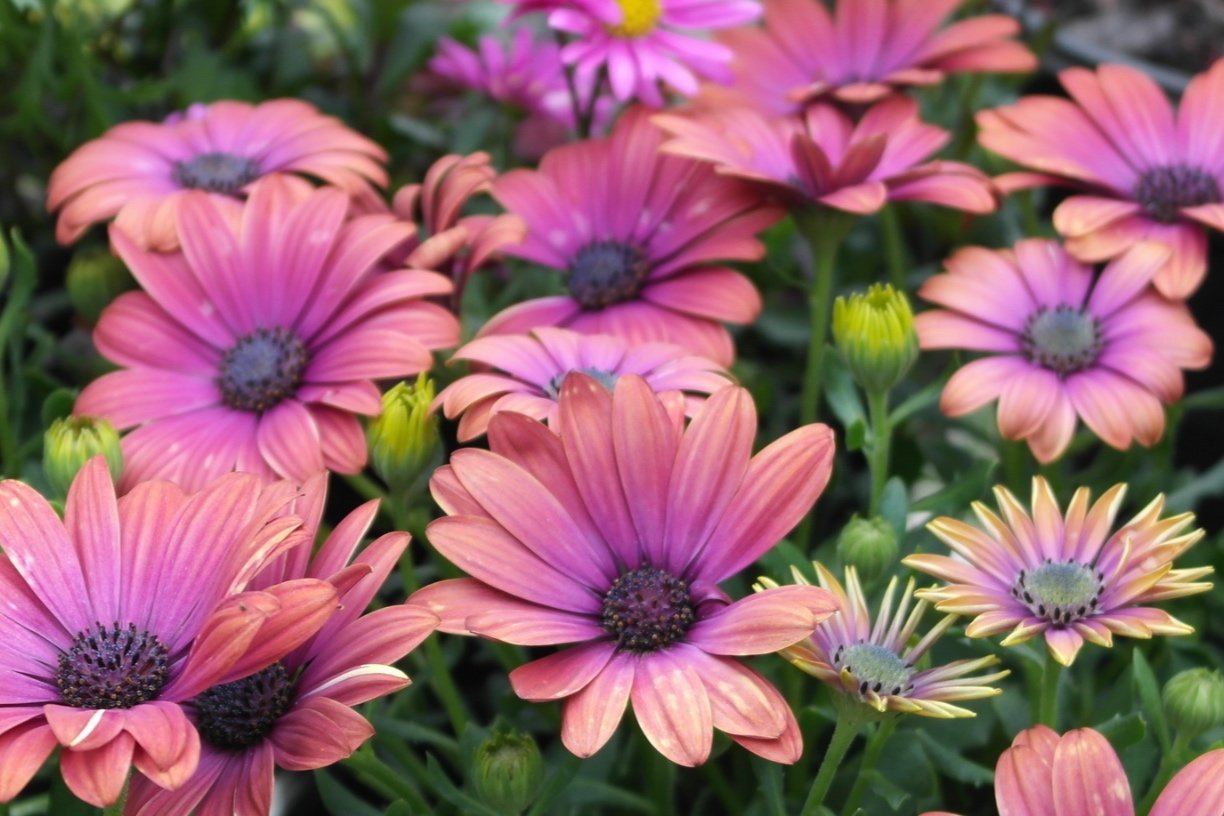What Do Mallard Ducks & African Daisies Have In Common?
A nest! Actually it’s called a clutch. And there may be up to 13 eggs!
So this particular Mama Mallard (called a hen) and Papa Mallard (called a drake) have visited us 2 years in a row - with 2 clutches each year. Each time, she’s chosen to make her nest in the same planter - the one with the African Daisies - right next to the pool.
Mama Mallard starts by creating a shallow depression in the center of the planter. Then she lines it with sticks, leaves and flowers from the surrounding plants. She lays her eggs at 1 or 2 day intervals, then plucks her own downy feathers to finish lining the nest and covering the eggs. This takes about 2 weeks.
Incubation doesn’t begin until all the eggs are laid. Once it starts, Mama Mallard will sit on her eggs most of the day except for about an hour in the morning and an hour in the afternoon so she can go get something to eat. And she’ll keep this up for about 28 days!
Interestingly enough, when Mama Mallard left the nest Papa Mallard always showed up to keep watch. He’d just swim around the pool until she got back and was settled. Such a sweet guy - at least for a couple of weeks. About 10 days after Mama Mallard began to incubate her eggs, Papa Mallard left to join back up with a flock of males for the rest of the summer.
Typically all the viable eggs hatch within 12 to 24 hours of each other. These little ducklings (called chicks) just hop out of the nest (i.e., pretty much falling out of the planter) and jump right into the water.
The danger is though that sometimes 1 or more of them can’t find their way out of the water. A swimming pool’s not like a lake or river that has gently sloping banks. Plus chicks are too young to fly.
And while these little guys seem to be able to follow Mama Mallard okay and make it into the water, sometimes they may need a little help getting out. So . . .
We got a little creative. It’s pretty amazing what you can do with a pool raft and a couple of 2 x 4s! But the excitement only lasts for a few days. Once Mama Mallard is sure that her chicks can swim, she and the chicks leave our yard and head to the river. Mama will hang around for about 10 days, but after that the chicks can survive on their own and Mama Mallard says good-bye.
Until she shows up again to lay another clutch. If it’s this season, she’ll be with the same drake. If it’s next year, she’ll have a new man.
So here’s what our African Daisies should look like. But as you can see from the photos above, Mama Mallard has pretty much destroyed them.
African Daisies are members of the Asteraceae plant family. So are Zinnias and Shasta Daisies. But the colors of African Daisies are much more vibrant than the classic daisy. African Daisies are perennials (but planted as annuals in all but Zones 10 and 11) so you plant them every year - except when Mama Mallard is nesting on them. They want full sun, moist soil and no frost.
Just be aware - African Daisies stop blooming when it gets too hot. So if you plant them with other flowers, you won’t notice so much. Dianthus is a great choice.
One last bit about Mallard ducks. Mallards are protected under the Migratory Bird Treaty Act of 1918. So you can’t really touch a Mallard duck or its nest unless you have a permit from the U.S. Fish and Wildlife Service. But just know that the U.S. Fish and Wildlife Service does not issue permits to remove Mallards, eggs or nests that are located in a pool or an enclosed yard. If the nest is empty, however, you can move it without a permit.
Let’s keep in touch! Usually I blog about gardening and culinary nutrition, but I believe Mama Mallard needs her moment of fame. Join my email list to keep learning and be inspired.













